| View previous topic :: View next topic |
| Author |
Message |
Jesito


Joined: 24 Aug 2007
Posts: 5745
Location: Olivella, Catalonia, (Spain)
Expire: 2015-01-07
|
 Posted: Sat Mar 21, 2009 8:29 am Post subject: Going environmental friendly on the Olympus AF1 (and others) Posted: Sat Mar 21, 2009 8:29 am Post subject: Going environmental friendly on the Olympus AF1 (and others) |
 |
|
Jesito wrote:
Hi Colleagues,
Thanks to Farside, I took the dust off my Oly AF-1.
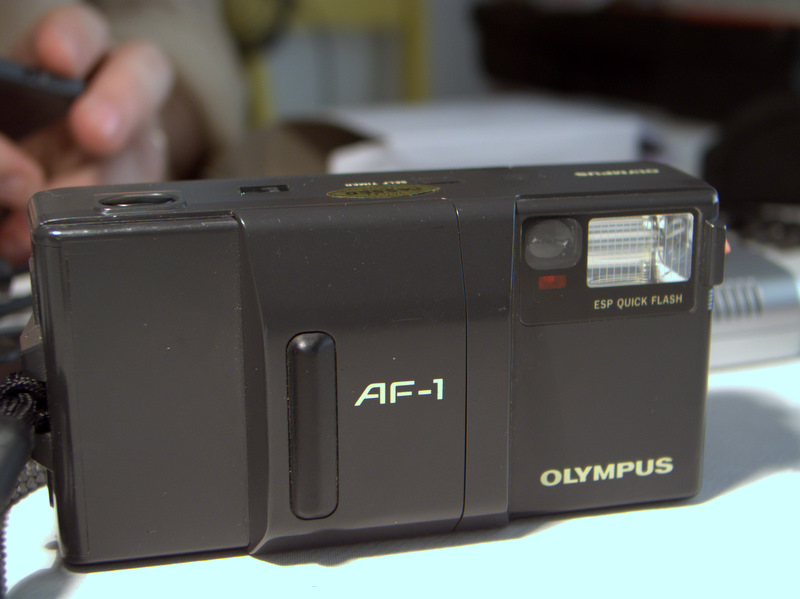
It works like a charm, everything is okay. I put a test roll on it (SCHLECKER ISO 200 x 12 shots), and all was fine. Flash shooting when needed, etc.
But at the end of the roll (the camera has an automatic rewind function), the roll didn't rewind at all. I first mistakenly thought the roll was already rewound, so I opened the camera. My surprise was seeing the film still there, so probably it's damaged. No big worry, there were only test shots inside.
So the second thought was the camera did die. Too much coincidence, so I realized that probably the battery was exhausted. Taking it out and measuring the voltage proved so.
So next step was to buy a new expensive single use lithium battery. The price of a fresh battery might be more than the camera's current value in eBay. And also, throwing away dead batteries in not my way of keeping the environment. So I decided not to spend money in single use batteries and try to adapt some of the rechargeable ones.
The first step is to analyze what's inside the CR-P2p battery that was inside the camera:
1. Peeling off the transparent plastic film and the label
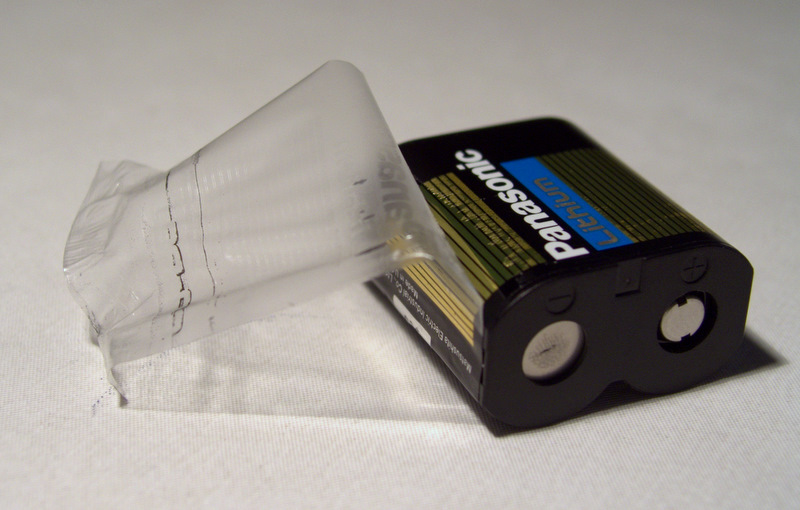

Once them off, we can see two side windows (one on each side) that show two s¡ngle cells (as expected from the shape of the battery).

2. Opening the top side is quite easy pressing up from the windows with a screwdriver:

We can see the expected two cells, that bear much ressemblance to the CR123A lithium rechargeable batteries that I use in the SIGMA SD-9.
Both battery cells are connected togheter throug a flat metal band.
3. Clean up the borders to allow the battery cells to go out:
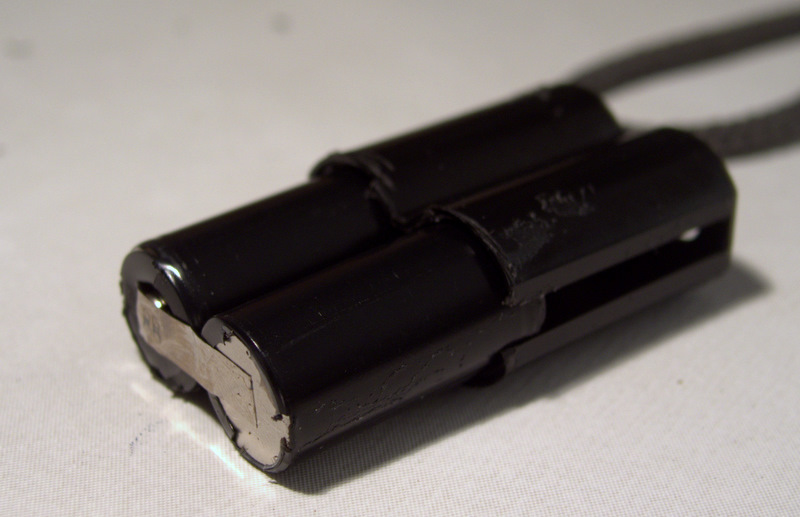
Both cells are dry. So best to remove the metal strip to reuse it.
3. The CR123A cells are equal in size (good eye!  ). ).
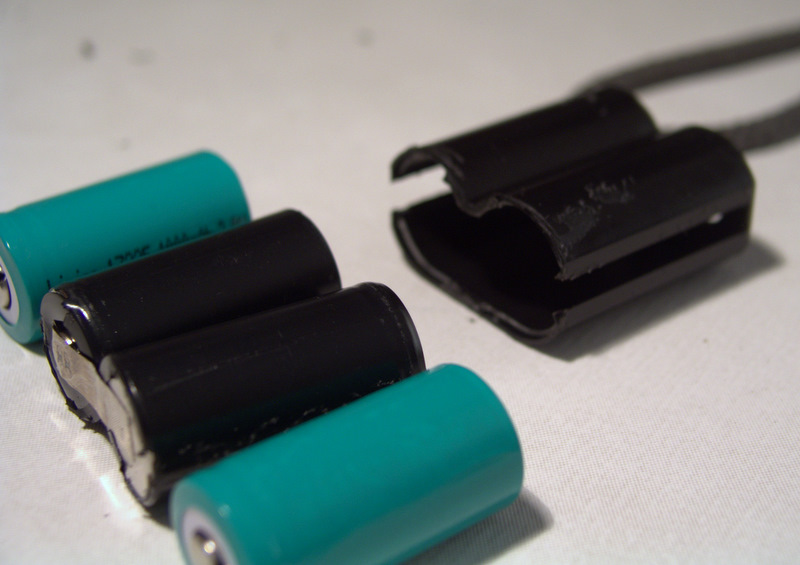
4. So let's put two of them (fully charged) in, and use some transparent adhesive band to keep everything in place, including the recovered metal strip:

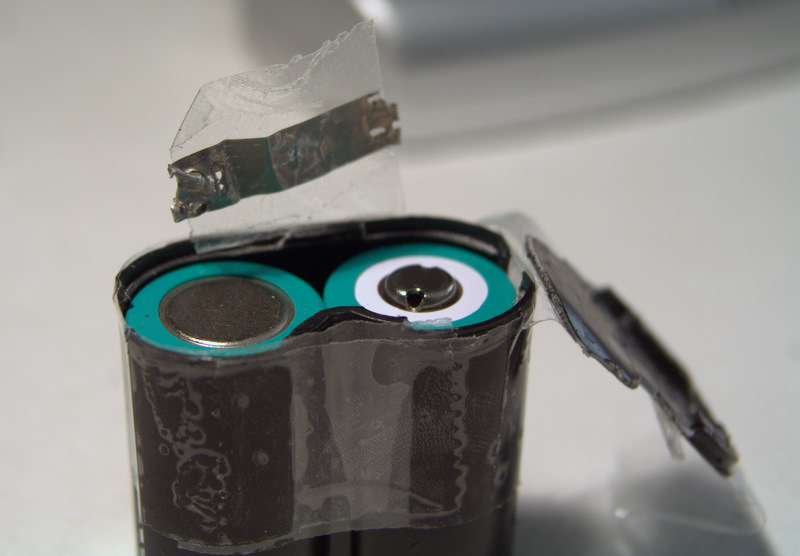

5. Put back in place the black plastic piece taken out from the top, and fix it also, measure with the tester to check that the process went ok and put the new rechargeable battery back into the camera:


And that's all folks!.
Now your AF-1 is environmental friendly. BTW, the charger for the CR123A and 4 batteries, cost me 9.49€ shipping included, from eBay, much less than a single CR-P2p battery (15€ in the local shops).
So please, do me a favour and go environmental friendly you also.
Kind regards,
Jes.
_________________
Jesito, Moderator 
Jesito's backsack:
Zooms Sigma 70-300, Tamron 35-135 and 70-210 short, 70-210 long, 28-70 CF Macro, 35-70, 35-80, Vivitar 70-210 KA, Tamron 70-250.
Fixed Industar-50, , Tamron 24mm, Tamron 135mm, Sands Hunter 135mm, Pancolar 50mm, Volna-3, many Exakta lenses
DSLR SIGMA SD9 & SD14, EOS 5D, Sony A700 and NEXF3, Oly E-330, E-400, E-450, E-1
TLR/6x6/645 YashicaMat, Petri 6x45, Nettar, Franka Solida, Brilliant
SLR Minolta X300, Fuji STX II, Praktica VLC3, Pentax P30t, EXA500, EXA 1A, Spotmatic(2), Chinon CM-4S, Ricoh, Contax, Konica TC-X , Minolta 5000, 7000i, 3Sxi, EOS 500 and CX
Rangefinders Chinon 35EE, Konica C35 auto, Canonet 28, Yashica Lynx, FED-2, Yashica electro 35, Argus C3 & C4, Regula Cita III, Voigtlander Vitoret (many), Welta Welti-I, Kodak Signette 35, Zorki-4, Bessa-R & L, Minolta Weathermatic, olympus XA2
Compact Film Konica C35V, Voigtlander Vitorets, Canon Prima Super 105, Olympus XA2 and XA3
Compact Digital Olympus C-5050, Aiptek Slim 3000, Canon Powershot A540, Nikon 5200, SIGMA DP1s, Polaroid X530, IXUS55, Kodak 6490, Powershot G9 and G10
CSCCanon EOS-M, Samsung NX100 and NX210, Lumix G5, NEX-F3 |
|
| Back to top |
|
 |
Katastrofo

Joined: 26 Feb 2007
Posts: 10405
Location: USA
Expire: 2013-11-19
|
 Posted: Sat Mar 21, 2009 4:53 pm Post subject: Posted: Sat Mar 21, 2009 4:53 pm Post subject: |
 |
|
Katastrofo wrote:
Wow, Jes, I did the EXACT same thing 3 days ago for my Ricoh FF-90
Super! Amazing...
I used a dollup of liquid solder for each battery to help the metal strip
stay in place, the one that straps both batteries to 6V.
Duracell is DL 223A which immediately clues you in that these are just
two CR123A batteries strapped together. And at Batteries + in town runs
you $14+! for one battery. I just bought 6 more CR123A Duracell Ultra
off ebay for <$20 shipping included.
It took about 5 Personna razor blades to cut off the top of the battery
case. lol
Last edited by Katastrofo on Sat Mar 21, 2009 4:57 pm; edited 1 time in total |
|
| Back to top |
|
 |
Jesito


Joined: 24 Aug 2007
Posts: 5745
Location: Olivella, Catalonia, (Spain)
Expire: 2015-01-07
|
 Posted: Sat Mar 21, 2009 4:56 pm Post subject: Posted: Sat Mar 21, 2009 4:56 pm Post subject: |
 |
|
Jesito wrote:
| Katastrofo wrote: |
Wow, Jes, I did the EXACT same thing 3 days ago for my Ricoh FF-90
Super! Amazing...
It took about 5 Personna razor blades to cut off the top of the battery
case. lol |
Nice to hear it, Bill  . You used a finer approach than me! . You used a finer approach than me!
Furthermore, I've found the Canon Prima 105 does accept the same rechargeable batteries!..
Kind regards,
Jes.
_________________
Jesito, Moderator 
Jesito's backsack:
Zooms Sigma 70-300, Tamron 35-135 and 70-210 short, 70-210 long, 28-70 CF Macro, 35-70, 35-80, Vivitar 70-210 KA, Tamron 70-250.
Fixed Industar-50, , Tamron 24mm, Tamron 135mm, Sands Hunter 135mm, Pancolar 50mm, Volna-3, many Exakta lenses
DSLR SIGMA SD9 & SD14, EOS 5D, Sony A700 and NEXF3, Oly E-330, E-400, E-450, E-1
TLR/6x6/645 YashicaMat, Petri 6x45, Nettar, Franka Solida, Brilliant
SLR Minolta X300, Fuji STX II, Praktica VLC3, Pentax P30t, EXA500, EXA 1A, Spotmatic(2), Chinon CM-4S, Ricoh, Contax, Konica TC-X , Minolta 5000, 7000i, 3Sxi, EOS 500 and CX
Rangefinders Chinon 35EE, Konica C35 auto, Canonet 28, Yashica Lynx, FED-2, Yashica electro 35, Argus C3 & C4, Regula Cita III, Voigtlander Vitoret (many), Welta Welti-I, Kodak Signette 35, Zorki-4, Bessa-R & L, Minolta Weathermatic, olympus XA2
Compact Film Konica C35V, Voigtlander Vitorets, Canon Prima Super 105, Olympus XA2 and XA3
Compact Digital Olympus C-5050, Aiptek Slim 3000, Canon Powershot A540, Nikon 5200, SIGMA DP1s, Polaroid X530, IXUS55, Kodak 6490, Powershot G9 and G10
CSCCanon EOS-M, Samsung NX100 and NX210, Lumix G5, NEX-F3 |
|
| Back to top |
|
 |
Farside


Joined: 01 Sep 2007
Posts: 6557
Location: Ireland
Expire: 2013-12-27
|
 Posted: Sat Mar 21, 2009 11:10 pm Post subject: Posted: Sat Mar 21, 2009 11:10 pm Post subject: |
 |
|
Farside wrote:
Excellent news, Jes.
I was thinking of doing something along those lines, since the price of a new battery locally is quite silly. Luckily, the existing battery seems ok for a while yet.
_________________
Dave - Moderator
Camera Fiend and Biograph Operator
If I wanted soot and whitewash I'd be a chimney sweep and house painter.
The Lenses of Farside (click)
BUY FRESH FOMAPAN TO HELP KEEP THE FACTORY ALIVE ---
Foma Campaign topic -
http://forum.mflenses.com/foma-campaign-t55443.html
FOMAPAN on forum -
http://www.mflenses.com/fs.php?sw=Fomapan
Webshop Norway
http://www.fomafoto.com/
Webshop Czech
https://fomaobchod.cz/inshop/scripts/shop.aspx?action=DoChangeLanguage&LangID=4 |
|
| Back to top |
|
 |
Nisei
Joined: 24 Apr 2023
Posts: 5
|
 Posted: Thu Sep 28, 2023 8:20 pm Post subject: Posted: Thu Sep 28, 2023 8:20 pm Post subject: |
 |
|
Nisei wrote:
2 non rechargeable 3V Lithium batteries in series total up to 6V
2 fully charged Li-Ion batteries in series total up to 8.4V
You were lucky your camera can handle the 35% increase in voltage but I wouldn't recommend this as a general way to replace Lithium batteries in equipment from an era before rechargeable Li-Ion batteries were common. In those cases it's safe to use LiFePo4 which is 3.2V per cell. |
|
| Back to top |
|
 |
|
|
|
You cannot post new topics in this forum
You cannot reply to topics in this forum
You cannot edit your posts in this forum
You cannot delete your posts in this forum
You cannot vote in polls in this forum
|
